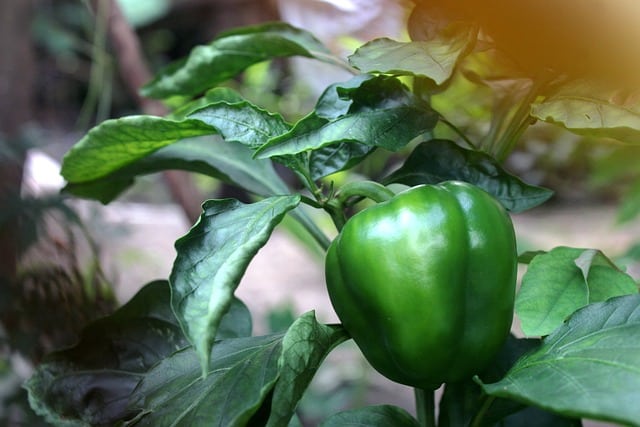Bell pepper plants are a popular addition to many gardens due to their delicious taste and versatility in cooking. However, gardeners may notice that their bell pepper plant leaves are drooping, which can be a sign of an underlying issue. Understanding the causes of bell pepper plant leaves drooping is crucial to ensure the plant’s health and productivity.
Environmental factors such as extreme heat, sunlight, cold temperatures, and wind can cause bell pepper plant leaves to droop. Additionally, over or underwatering, transplant shock, excessive fertilizer, pest attacks, bacterial infections, or fungi attacks can also lead to drooping leaves.
Identifying the cause of the drooping leaves is essential to determine the appropriate treatment and prevent further damage to the plant.
Key Takeaways
- Environmental factors such as extreme heat, sunlight, cold temperatures, and wind can cause bell pepper plant leaves to droop.
- Over or underwatering, transplant shock, excessive fertilizer, pest attacks, bacterial infections, or fungi attacks can also lead to drooping leaves.
- Identifying the cause of the drooping leaves is essential to determine the appropriate treatment and prevent further damage to the plant.
See these other related posts:
Understanding Bell Pepper Plant Drooping
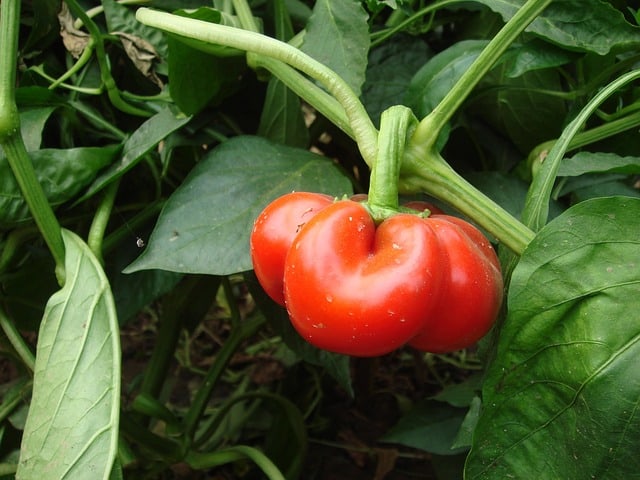
Causes of Drooping
Bell pepper plants are susceptible to a variety of environmental factors that can cause the leaves to droop or wilt.
The most common cause of drooping is a lack of water. When the soil becomes too dry, the plant cannot absorb the necessary nutrients and water, causing the leaves to wilt. Overwatering can also cause drooping, as it can lead to root rot and other fungal diseases.
Another common cause of drooping is extreme temperatures. If the temperature is too high or too low, the plant may not be able to absorb the necessary nutrients and water, leading to wilting leaves.
Additionally, pests and diseases can also cause drooping. Common pests that attack bell pepper plants include aphids, spider mites, and whiteflies. Fungal diseases like powdery mildew and blight can also cause the leaves to wilt and droop.
Symptoms of Drooping
The symptoms of drooping in bell pepper plants are easy to identify. The leaves will start to wilt and droop, and may even turn yellow or brown. The stem may also become weak and bend over. If the plant is not watered or treated promptly, it may eventually die.
To prevent drooping, it is important to keep the soil moist but not waterlogged. Bell pepper plants should be watered regularly, especially during hot and dry weather. It is also important to ensure that the plant is not exposed to extreme temperatures or pests and diseases.
Regular inspection and treatment can help to prevent drooping and keep the plant healthy.
Environmental Factors Affecting Bell Pepper Plants
Bell pepper plants are sensitive to their environment and can be affected by various factors. Understanding the environmental factors that can affect bell pepper plants is crucial in maintaining their health and productivity.
1. Temperature
Temperature plays a vital role in the growth and development of bell pepper plants. High temperatures can cause the leaves to wilt and droop, while cold temperatures can slow down the growth of the plant. Bell pepper plants thrive in warm temperatures ranging from 70°F to 85°F.
2. Sunlight
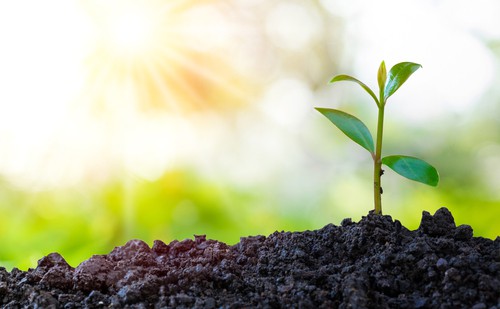
Bell pepper plants require plenty of sunlight to grow and thrive. However, too much sunlight can cause the leaves to wilt and droop. It is best to provide bell pepper plants with partial shade during the hottest part of the day, especially during the summer months.
3. Indoor vs. Outdoor
Bell pepper plants can be grown both indoors and outdoors. Indoor plants require sufficient light and warmth, while outdoor plants require plenty of sunlight and warm temperatures. Outdoor plants also benefit from natural pollination by bees and other insects.
5. Garden Environment
The garden environment can also affect the growth and productivity of bell pepper plants. The soil should be well-drained and rich in nutrients, and the plants should be watered regularly. Bell pepper plants also benefit from the presence of other plants, such as basil and marigolds, which can help to repel pests and attract beneficial insects.
Watering and Irrigation Techniques
Watering and irrigation are crucial to the health and growth of bell pepper plants. Proper watering techniques can prevent leaves from drooping due to a lack of water or overwatering.
The frequency and amount of water needed for bell pepper plants depend on various factors such as the weather, soil type, and plant size. As a general rule, bell pepper plants need at least an inch of water per week. However, it is essential to check the soil’s moisture level regularly to ensure that the plants are getting enough water.
Overwatering can lead to waterlogged soil, which can cause root rot and other fungal diseases. It is crucial to avoid watering the plants too frequently or using too much water at once. Instead, it is recommended to water the plants deeply and infrequently.
One effective technique for watering bell pepper plants is to use a drip irrigation system. Drip irrigation allows water to be delivered directly to the plant’s roots, reducing water loss due to evaporation and minimizing the risk of fungal diseases.
Another useful technique is to mulch around the plants. Mulching helps retain moisture in the soil and prevents water from evaporating too quickly. It also helps regulate soil temperature and suppresses weed growth.
In summary, proper watering and irrigation techniques are essential for preventing bell pepper plant leaves from drooping due to a lack of water or overwatering. Using a drip irrigation system and mulching around the plants can help ensure that the plants are getting enough water without the risk of fungal diseases.
Soil and Fertilizer Needs
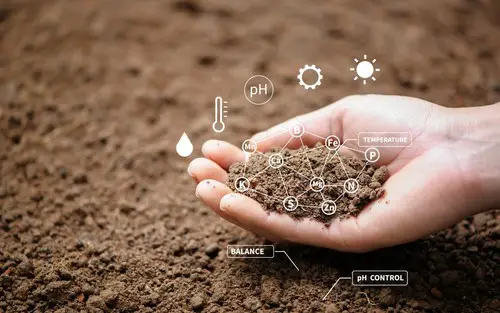
Bell pepper plants require well-draining soil that is rich in nutrients. The soil should have a pH level between 6.0 and 7.0. If the soil is too acidic or alkaline, it can affect the plant’s growth and development. Adding organic matter such as compost to the soil can help improve its structure and nutrient content.
It is important to ensure that the soil is moist but not waterlogged. Overwatering can lead to poor root development and soil-borne pathogens. On the other hand, under-watering can cause the leaves to wilt and drop. Therefore, it is essential to strike a balance when watering the plant.
Fertilizer is also crucial for the growth and development of bell pepper plants. Nitrogen, phosphorus, and potassium are the three primary nutrients required by the plant. Nitrogen is essential for leaf growth, phosphorus for root development, and potassium for flower and fruit development.
When selecting a fertilizer, it is essential to consider the NPK ratio. The NPK ratio refers to the amount of nitrogen, phosphorus, and potassium in the fertilizer. For bell pepper plants, a balanced fertilizer with an NPK ratio of 5-5-5 or 2-3-1 is recommended.
It is also important to avoid over-fertilizing the plant as it can lead to excessive foliage growth and reduce fruit production. Mulching can help conserve moisture in the soil and reduce nutrient loss. Organic mulches such as straw, leaves, or grass clippings can also add nutrients to the soil as they decompose.
Common Diseases and Pests
Bell pepper plants are susceptible to a variety of diseases and pests that can cause their leaves to droop. Here are some of the most common ones:
- Bacterial wilt: This disease is caused by the bacterium Ralstonia solanacearum and can cause wilting, yellowing, and death of the plant. It is spread through contaminated soil, water, and tools. Infected plants should be removed and destroyed, and the soil should be treated with a fungicide.
- Fungal infections: Bell pepper plants can be affected by various fungal infections, such as powdery mildew and verticillium wilt. Powdery mildew appears as a white powder on the leaves, while verticillium wilt causes yellowing and wilting of the leaves. Fungicides can be used to treat these infections.
- Aphids: These small, pear-shaped insects suck the sap from the leaves, causing them to wilt and curl. They can also transmit viruses to the plant. Insecticidal soap or neem oil can be used to control aphids.
- Whiteflies: These tiny, white insects are often found on the underside of the leaves. They suck the sap from the plant and can cause the leaves to turn yellow and drop off. Yellow sticky traps or insecticidal soap can be used to control whiteflies.
- Spider mites: These tiny, spider-like insects feed on the plant’s sap, causing the leaves to turn yellow and fall off. They are often found on the undersides of the leaves. Insecticidal soap or neem oil can be used to control spider mites.
- Slugs and snails: These pests can chew holes in the leaves and cause them to droop. They are often found in damp areas and can be controlled with slug bait or by handpicking them off the plant.
- Thrips: These small, slender insects feed on the plant’s sap and can cause the leaves to turn brown and curl. They can be controlled with insecticidal soap or neem oil.
- Weeds: Weeds can compete with bell pepper plants for water and nutrients, causing the leaves to droop. They should be removed by hand or with a hoe.
By identifying and treating these diseases and pests early, gardeners can prevent their bell pepper plants from wilting and ensure a healthy harvest.
Prevention and Treatment Strategies

Preventing bell pepper plant leaves from drooping is easier than treating them after they start to droop. Here are some strategies to prevent and treat drooping bell pepper plant leaves:
Prevention Strategies
- Watering: Overwatering or underwatering can both cause bell pepper plant leaves to droop. Water the plants regularly, but do not let the soil become waterlogged. The soil should be moist, but not wet. Water the plants deeply once a week, or more frequently if the weather is hot and dry.
- Soil: Bell pepper plants prefer well-drained, nutrient-rich soil. Amend the soil with compost or other organic matter before planting. Avoid planting bell pepper plants in heavy clay soil.
- Sunlight: Bell pepper plants need at least six hours of sunlight per day. Plant them in a location that receives full sun.
- Fertilizer: Bell pepper plants need regular fertilization to grow well and produce fruit. Use a balanced fertilizer that contains equal amounts of nitrogen, phosphorus, and potassium. Follow the instructions on the fertilizer package for application rates and timing.
Treatment Strategies
- Shock: If bell pepper plants are exposed to sudden changes in temperature, light, or moisture, they may go into shock and droop. Move the plants to a more suitable location and wait for them to recover.
- Transplant Shock: Transplanting bell pepper plants can also cause them to droop. To avoid transplant shock, harden off the plants before transplanting them. Hardening off involves gradually exposing the plants to outdoor conditions over a period of 7 to 10 days.
- Pruning: Pruning can help prevent bell pepper plant leaves from drooping by improving air circulation and reducing the weight of the plant. Prune the plants to remove any dead, diseased, or damaged leaves or branches.
- Neem Oil: Neem oil is an organic insecticide that can help prevent and treat bell pepper plant diseases and pests. Mix neem oil with water according to the package instructions and spray the plants every 7 to 14 days.
- Insecticidal Soap: Insecticidal soap is another organic option for treating bell pepper plant pests. Spray the plants with insecticidal soap every 7 to 14 days.
- Ladybugs: Ladybugs are a natural predator of aphids, which can cause bell pepper plant leaves to droop. Release ladybugs in the garden to help control aphids and other pests.
Recognizing and Addressing Nutrient Deficiencies
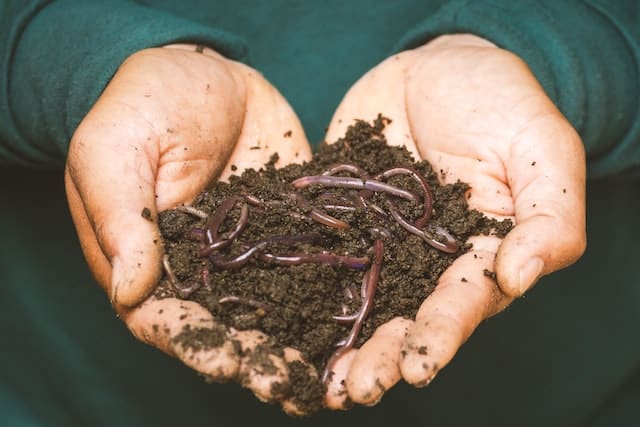
Bell pepper plants can be susceptible to nutrient deficiencies, which can cause leaves to droop and fruits to develop brown spots. It is important to recognize these deficiencies early and address them promptly to ensure healthy plant growth and optimal fruit production.
There are several key nutrients that bell pepper plants need to thrive, including nitrogen, phosphorus, potassium, calcium, and magnesium. Deficiencies in any of these nutrients can cause a range of symptoms, including drooping leaves, stunted growth, and poor fruit development.
One common sign of nutrient deficiency in bell pepper plants is drooping leaves. If the leaves are drooping but the soil is moist, it may be a sign of nitrogen deficiency. Nitrogen is essential for plant growth and is often the first nutrient to become depleted in the soil. Adding a nitrogen-rich fertilizer can help address this deficiency and promote healthy plant growth.
Another nutrient that is essential for bell pepper plants is phosphorus. A deficiency in phosphorus can cause leaves to turn a dark shade of green and may also lead to stunted growth. Adding a phosphorus-rich fertilizer can help address this deficiency and promote healthy root development.
Potassium is another important nutrient for bell pepper plants. A deficiency in potassium can cause leaves to turn yellow or brown and may also lead to poor fruit development. Adding a potassium-rich fertilizer can help address this deficiency and promote healthy fruit production.
Calcium and magnesium are also important nutrients for bell pepper plants. A deficiency in calcium can cause fruits to develop brown spots, while a deficiency in magnesium can cause leaves to turn yellow or brown. Adding a calcium or magnesium-rich fertilizer can help address these deficiencies and promote healthy plant growth.
Other Potential Issues
Aside from the common causes of bell pepper plant leaves drooping, there are other potential issues that can affect the health of the plant.
1. Heat Stress
Bell pepper plants are sensitive to extreme temperatures. High temperatures can cause the leaves to wilt and drop, and can also lead to blossom drop and poor fruit set. If the plant is exposed to direct sunlight for too long, it can also suffer from sunscald. To prevent heat stress, ensure that the plant is planted in a shaded area and water it regularly.
2. Root System Problems
The root system is the foundation of the plant, and any issues with the roots can lead to poor plant health. Over-watering can cause the roots to suffocate and rot, while under-watering can cause the roots to dry out and die.
Root rot is a common problem that can be caused by overwatering or poorly draining soil. To prevent root system problems, ensure that the soil is well-draining and that the plant is watered correctly.
3. Spotted Wilt Virus
Spotted wilt virus is a serious disease that can affect bell pepper plants. It is spread by thrips, which are tiny insects that feed on the plant’s sap. The virus can cause the leaves to wilt and turn yellow or brown, and can also cause fruit to become misshapen.
Unfortunately, there is no cure for spotted wilt virus, so infected plants should be removed immediately to prevent the virus from spreading to other plants.
4. Dehydration
Dehydration is a common problem that can cause bell pepper plant leaves to droop. If the plant is not receiving enough water, the leaves will become limp and wilted. To prevent dehydration, ensure that the plant is watered regularly and that the soil is kept moist but not waterlogged.
5. Other Issues
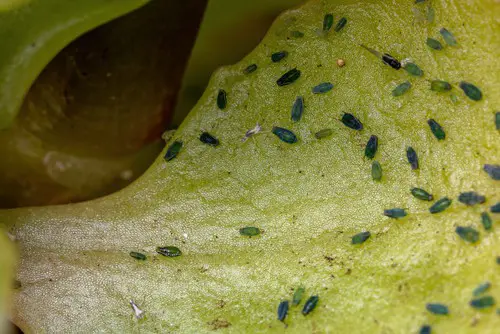
Other potential issues that can affect bell pepper plant health include over-fertilization, pest infestations, and transpiration. Over-fertilization can cause the plant to become stressed and can lead to leaf drop.
Pest infestations can cause the leaves to become spotted or discolored, and can also cause the plant to become weakened. Transpiration is the process by which the plant loses water through its leaves, and if the plant is losing too much water, it can cause the leaves to droop and wilt.
Frequently Asked Questions
Why are my bell pepper plant leaves drooping after watering?
There are several reasons why bell pepper plant leaves may droop after watering. Overwatering can lead to root rot, which prevents the plant from absorbing water properly.
Underwatering, on the other hand, can cause the plant to become dehydrated and wilt. Other possible causes include nutrient deficiencies, pests, and diseases.
How can I revive wilting pepper plants?
If your pepper plants are wilting, the first step is to identify the cause. If the cause is overwatering, you may need to adjust your watering schedule and allow the soil to dry out between waterings.
If the cause is underwatering, you may need to water your plants more frequently. In some cases, you may need to add fertilizer or treat your plants for pests or diseases.
What are the signs of overwatering pepper plants?
Signs of overwatering in pepper plants include yellowing leaves, soft and mushy stems, and a foul smell coming from the soil. The plant may also show signs of root rot, such as brown or black roots that are mushy and slimy to the touch.
How do I fix a sagging pepper plant?
To fix a sagging pepper plant, you need to identify the cause of the problem. If the cause is overwatering, you may need to adjust your watering schedule and allow the soil to dry out between waterings.
If the cause is underwatering, you may need to water your plants more frequently. In some cases, you may need to add fertilizer or treat your plants for pests or diseases.
What does an overwatered pepper plant look like?
An overwatered pepper plant may have yellowing leaves, soft and mushy stems, and a foul smell coming from the soil. The plant may also show signs of root rot, such as brown or black roots that are mushy and slimy to the touch.
Do bell pepper plants require a lot of water?
Bell pepper plants require regular watering, but they do not require a lot of water. It is important to allow the soil to dry out between waterings to prevent overwatering and root rot.
The frequency of watering will depend on the climate, soil type, and other factors. It is important to monitor your plants and adjust your watering schedule as needed.

Hey, I’m Lisa and I’ve been an avid gardener for over 30 years. I love writing, talking and living in the garden! Feel free to connect with me on my socials below

